Ameya DalviJun 17, 2021 16:08:48 IST
Rating: 3.5/5
Price: Rs 3,999
What’s good about the Redmi Watch
- Well priced for a watch with built-in GPS
- Fairly accurate distance tracking
- Lightweight and comfortable to wear for long durations
- Easy to use even for a novice
- Decent battery life; lasts close to a week
- 5ATM water-resistant; swim-proof
- Wide variety of watch faces to choose from
What’s not so good about the Redmi Watch
- No SpO2 sensor, continuous heart rate monitoring or menstrual cycle tracking
- Limited functionality and activity tracking
- Lack of animation makes UI feel lifeless
- Screen quality is average; no always-on display or tap-to-wake function
- Sleep tracking is unreliable
- Steps counter tends to add false steps
Xiaomi’s new fitness watch under the Redmi brand name is meant to fit right between the Mi Band 5 and Mi Watch Revolve, but it’s not quite as straightforward as that. It does add a pretty useful feature generally missing in this price bracket – built-in GPS, but at the cost of some other features found in similarly-priced competitors and also its own (and more affordable) fitness band. So let’s see what the Redmi Watch is all about and if it’s a good fit for you.

Redmi Watch. Image: Tech2/Ameya Dalvi
Standard design with proprietary strap connectors
The Redmi Watch’s design is fairly standard, with a squarish screen and a solitary button on the right. It looks like every other fitness watch in the country inspired by the Apple Watch’s design. The ivory-coloured variant of this watch does have a more striking appearance than the black one we received for review. Although the body is made of plastic, it doesn’t feel low quality, and the finish is quite good. The plastic body helps keep the weight down to just 35 grams, including the TPU straps. Speaking of straps, they do not have a standard connector and hence, one cannot use any third-party straps yet with this watch.
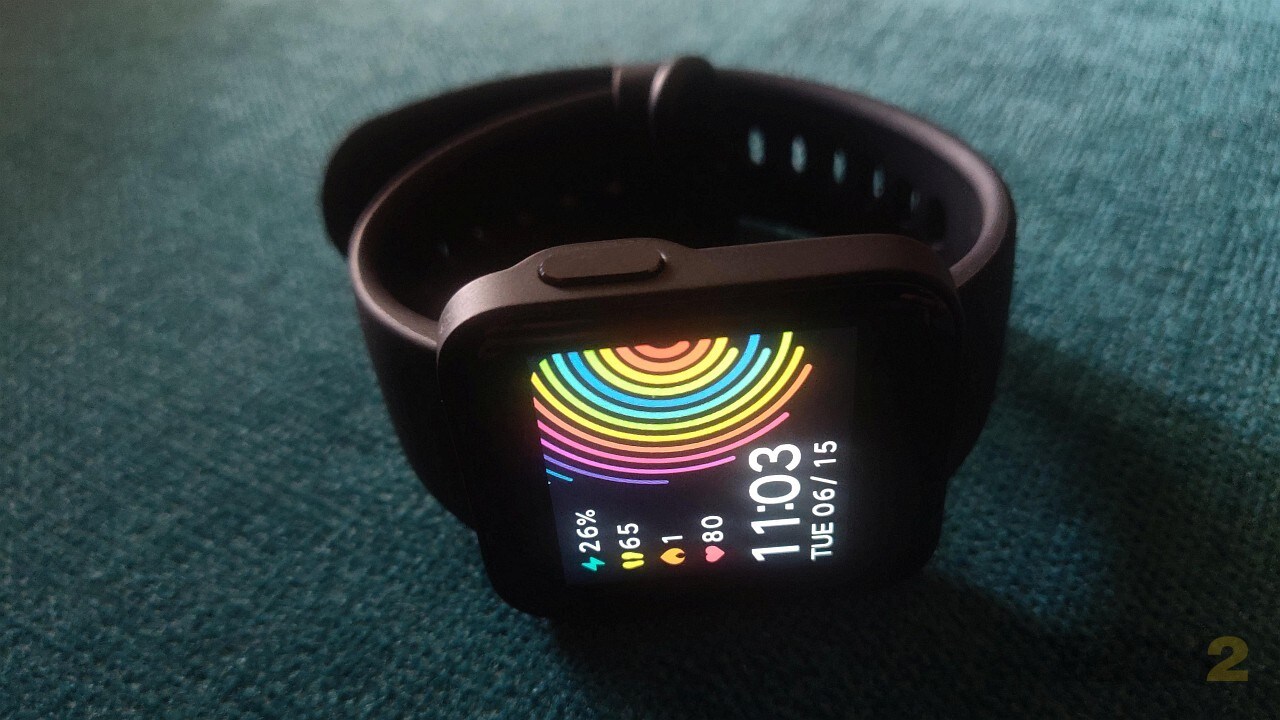
The plastic body helps keep the weight down to just 35 grams, including the TPU straps. Image: Tech2/Ameya Dalvi
The watch is extremely comfortable to wear for long durations; you will barely feel its presence, and the traditional buckle is always good to have for a secure fit. The touchscreen display lets you browse through the menus and access different functions of this device, in conjunction with the physical button placed along the right edge. The screen turns off automatically after a few seconds (or after the duration you select from the settings). However, you cannot wake it up by tapping the screen; you need to either press the physical button or flick your wrist. It doesn’t have an always-on display, either.
Dull display with decent legibility under bright sunlight
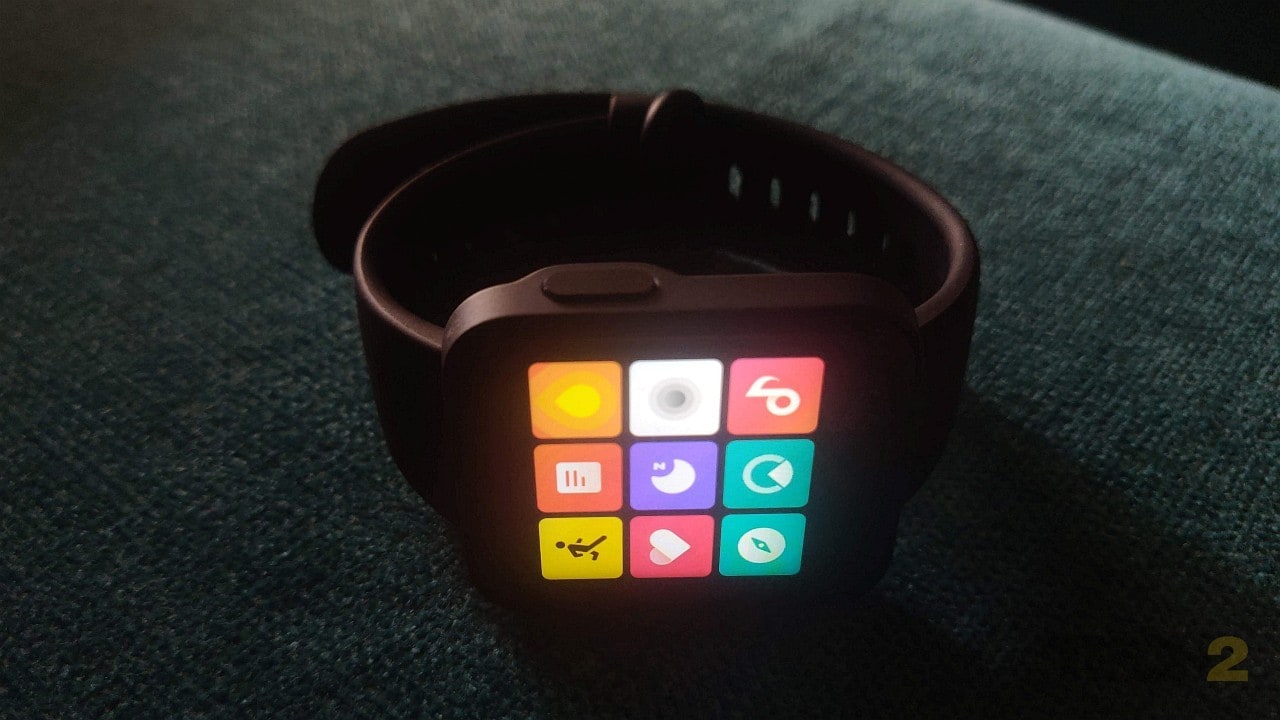
The screen has auto brightness adjust as well as six levels of manual brightness controls. Image: Tech2/Ameya Dalvi
The Redmi Watch has a 1.4-inch TFT LCD display with a resolution of 320 x 320 pixels. While the content on the screen is reasonably clear, colour reproduction and sharpness aren’t all that great; the display is, for a budget watch, serviceable at best. There are thick borders around the screen, and they stand out even more when using a light-coloured watch face. The screen is protected by a 2.5D scratch-resistant glass that curves nicely towards the edges, lending the watch a more premium feel. Though there is no mention of oleophobic coating, there were hardly any smudges visible on the screen during the course of my testing.
The screen has auto brightness adjust as well as six levels of manual brightness controls. It is legible outdoors if you push brightness closer to maximum. You need to flick your wrist to turn the screen on. If that doesn’t work, you can always press the side button. However, as I mentioned earlier, there is neither an always-on display option, nor can you wake the watch by tapping the screen. To make matters worse, there is a bit of delay between flicking the wrist and the screen lighting up, and it occasionally doesn’t work at the first flick. It lets you disable the motion-sensitive screen-wake function for specified hours or by turning on Sleep mode.
Wide variety of watch faces but limited slots on the watch itself
The Xiaomi Wear app you need to sync this watch with on your Android or iOS device, gives you access to a wide variety of watch faces. However you can only store five on the Redmi Watch, of which two that come preloaded cannot be removed. That leaves you with just three slots for watch faces of your choice. None of the faces you load on the watch from the app can be customised, but you do get a broad collection to choose from, and not just analogue or digital faces but also those that display a variety of fitness parameters, too. However, it takes over a minute to transfer each face from the app to the watch, and they look a tad dull on the watch compared to how they appear on the phone screen.
Simple but lifeless user interface
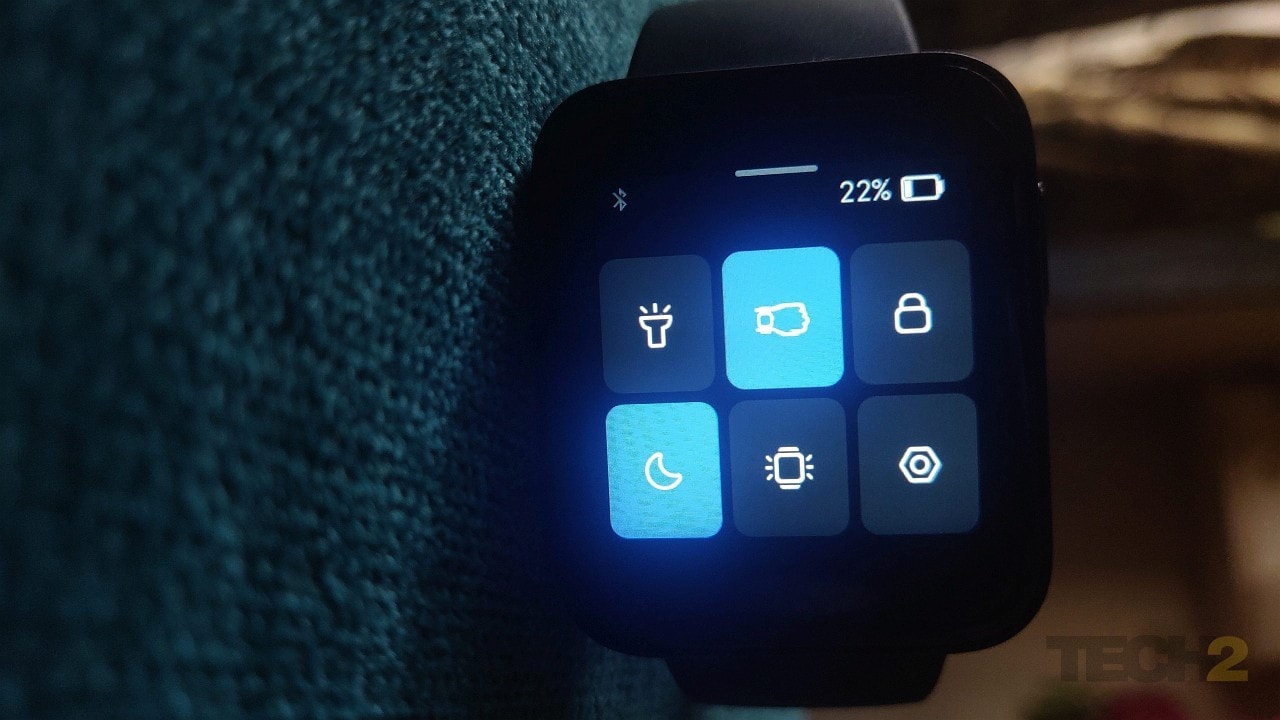
While the interface is snappy and generally lag-free, there is absolutely no animation of any kind, including for scrolling. Image: Tech2/Ameya Dalvi
The watch UI is simple even for a novice. All you need to do is swipe up on the screen for quick settings, swipe down to access notifications, and swipe left or right to browse through daily goal progress and other options such as heart rate monitoring, basic sleep data, music control, weather updates, etc. While the interface is snappy and generally lag-free, there is absolutely no animation of any kind, including for scrolling. This can be a bit disconcerting, and at times you feel like nothing’s happening, especially when scrolling through options.
When on the home screen, pressing the physical button opens up the app drawer with different functions of the watch presented neatly in a grid of tiny icons. On any other screen, pressing the same button takes you back to the home screen. The companion Xiaomi Wear app is also simple to use, with the necessary information neatly presented. However, given the limited functionality of the Redmi Watch, I don’t think the full potential of the app is utilised.
Accurate GPS tracking but limited functionality overall
While GPS is the centrepiece of this watch, overall functionality is fairly limited. Activity tracking includes walking, running, cycling (indoor and outdoor), swimming, freestyle workout, trekking and cricket. This Redmi Watch lacks a SpO2 sensor to measure blood oxygen saturation levels, something that’s extremely important today. The application of that goes beyond just on-demand oxygen readings, and it’s a bizarre decision to leave it out on this device. A few more things missing here that are incidentally present on the more affordable Mi Band 5 are stress monitoring, menstrual cycle tracking for women and PAI score.
Another thing lacking here is continuous heart rate monitoring. You can get the watch to track it every 60 seconds, but that’s as frequent as it can get. This watch is 5ATM water-resistant, so one can wear it to the swimming pool without a worry (once pools are safe and functional again). The steps counter here is reasonably accurate, but does have a tendency to report false steps occasionally. For outdoor walks and runs with GPS turned on, the reporting is on the money. When outdoors, it takes 10 to 15 seconds to get a GPS lock, and the connection stays strong throughout, as long as you are in the open.
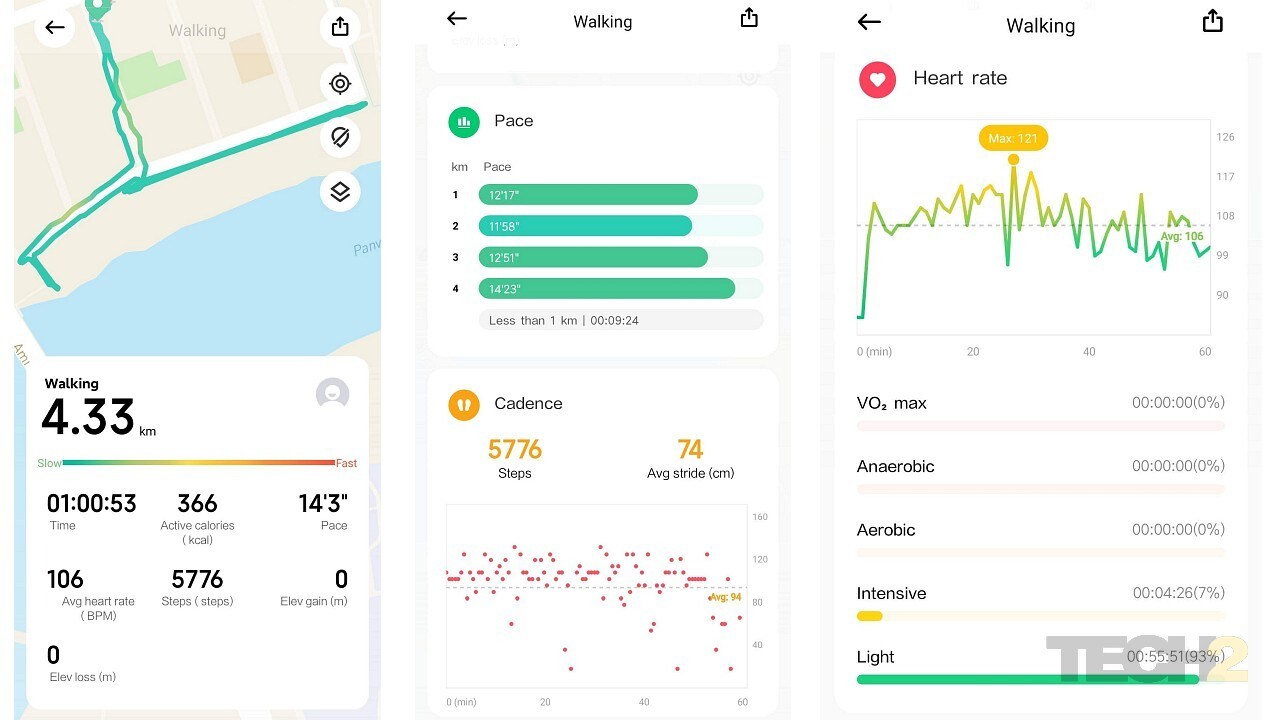
For outdoor walks and runs with GPS turned on, the reporting is on the money. Image: Tech2/Ameya Dalvi
The watch cannot detect any workout automatically, and you have to select the appropriate one when you’re about to begin. You also need to end it once you are done exercising. For instance, I switched on the freestyle mode and did a handful of workouts for half an hour. Post that I forgot to end the session and despite being seated for the better part of the next hour, the watch continued tracking my freestyle workout without any notifying me till I noticed it. I expect fitness watches to be smarter than that.
Like most fitness watches, the Redmi Watch has a sleep tracking feature, too. However, it is far from accurate. It often gets the overall sleep duration wrong. It tracks the quantum of light sleep, deep sleep and time spent awake; there is no REM sleep information available here. A sleep score is assigned depending on the quantity and quality of sleep, but that seems a little inconsistent, too. As you can see from the screenshot, a longer duration of sleep (that also included more deep sleep) scored lower in comparison to something noticeably inferior. The sleep tracking of this watch cannot be trusted till there’s a software update that can fix it.
A sleep score is assigned depending on the quantity and quality of sleep, but that seems a little inconsistent. Image: Tech2/Ameya Dalvi
Other features include call alerts and notifications for apps and services you choose to see. Messages are sorted neatly with the corresponding app icon displayed next to them. However, you can only view them on the watch screen and cannot reply using the watch; par for the course in this segment. Also, clearing the messages from the phone has no effect on the notifications on the watch; you need to clear them from the watch screen as well. You have music playback controls here to handle the playback on the paired smartphone, but you cannot store any music on this watch.
Good battery life for the segment
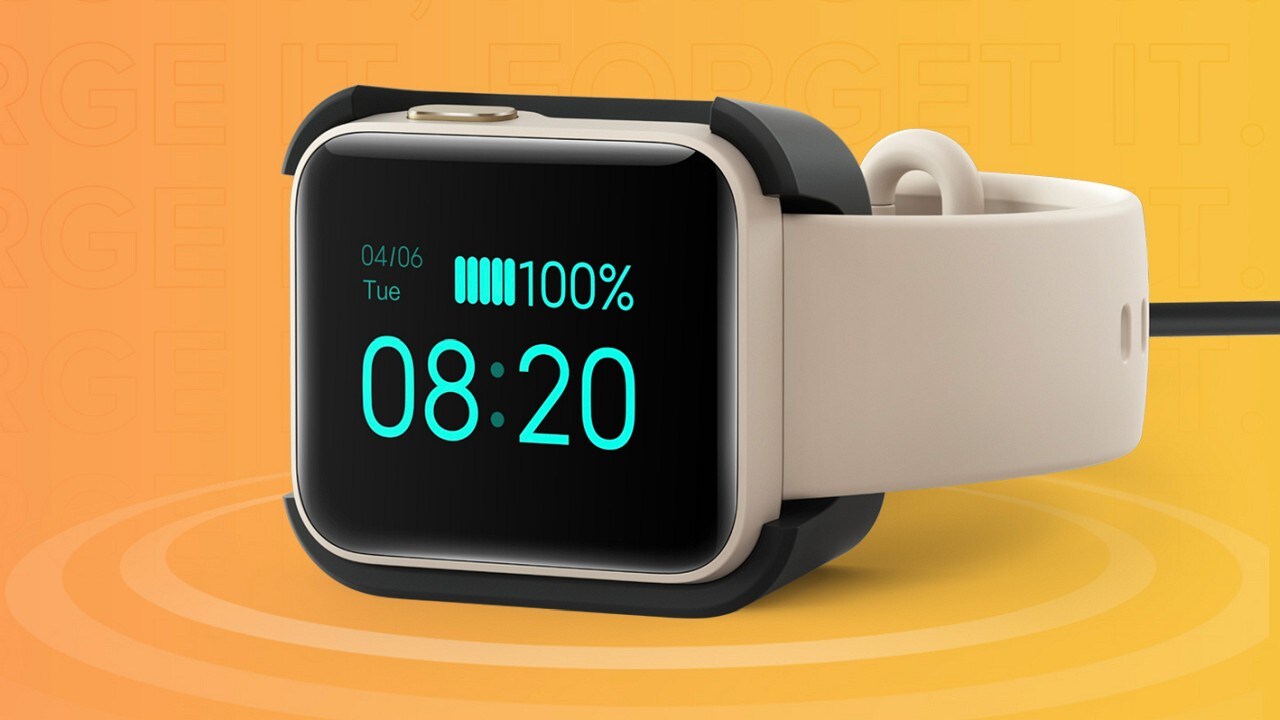
It takes less than two hours to charge it fully using the bundled charging dock; again, not bad.
Xiaomi advertises a battery backup of 10 days for this watch under optimal conditions, but in the real world, it goes on for a little over six days with heart rate monitoring (HRM) frequency set to 1 minute, three hour-long walks with GPS on, other fitness activities for an hour daily on other days and notifications limited to SMS and email. If you lower HRM frequency to five minutes, you can probably get a week’s use out of it. Though not spectacular, that’s decent battery life for a fitness watch with GPS. It takes less than two hours to charge it fully using the bundled charging dock; again, not bad.
Price and verdict
The Redmi Watch sells for Rs 3,999 in India with a one-year warranty. At that price point, it is probably the cheapest fitness watch with built-in GPS, and if that’s what you primarily need, this is a good option for you. If GPS is not that important, the Amazfit Bip U is a much better alternative that gives you a lot more features including a SpO2 sensor, accurate sleep tracking, stress monitoring and more on a similar-sized screen for the same price.
Alternatively, if form factor is not an issue, you may consider the Mi Band 5, which also gives you more features compared to the Redmi Watch (barring GPS), and for a good Rs 1,500 less. Lastly, if you can stretch your budget by a thousand rupees, the Amazfit Bip U Pro provides you with all the features of Bip U, along with built-in GPS.










